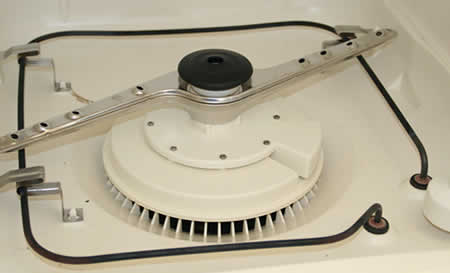

Allow sufficient space between dishes.There are a number of things you can do to increase how well your machine dries your dishes and prevent you needing to dry them by hand as little as possible. And again testing for continuity using a multimeter. You can visually inspect the fan and vent to check if anything is blocking it that would stop it from functioning correctly. Again you need to double check the machine is unplugged before attempting to access the fan.

#How to replace a dishwasher drying element manual#
You can employ your user manual to find out if your appliance uses a fan and find its location. If the fan isn’t operating as is should or the vent is blocked then the steam will form droplets on the crockery and cutlery instead preventing them from drying. Many machines will use a fan and vent to remove the warm moist air from the appliance. Once again you can make sure with the help of a multimeter. If the heating coil seems to be working as it should but there’s still no heat, then the thermostat could be the issue. Therefore, if it’s not working this can result in your dishwasher not heating up at all. The thermostat ensures your dishwasher doesn’t overheat, adjusting the heat of the water and air during drying. To check the heating coil first disconnect the dishwasher, then locate the heating coil, you could need the owners manual to do this, then use a multimeter to check it’s working. If your plates aren’t hot when they come out of the machine this can indicate that the heating element isn’t working as it should. Heat is essential for drying your plates so a faulty heating coil might be the explanation your appliance is not drying crockery and cutlery.

The best thing to do is inspect the rinse aid dispenser for damage and ensure that there is rinse aid inside. Rinse aid plays a key role in drying your plates and so if you have run out of rinse aid or your rinse aid dispenser is faulty this can stop your plates coming out properly dry. It’s also worth noting that plastics are more difficult to dry than metal, glass or ceramics.

Before assuming the machine is broken you should look at how it has been loaded, ensuring it isn’t overloaded. It might be that there is no fault with the dishwasher. However, if you notice a change in how well your machine is working one of these areas may be the cause. Not all makes and models are built to the same spec and some makes and models perform to a higher standard compared to others. If you open the dishwasher to wet plates here are a number of places you can look to help you figure out why. There is nothing more irritating than a home appliance that isn’t working properly, regardless of whether its a smartspeaker, washing machine or dishwasher we expect them to do the job they were made for. Top Reasons Your Dishwasher Isn’t Drying Crockery and Cutlery If dishes are coming out wet you can enlist the help of a dishwasher repair service or first utilize this troubleshooting list to help you identify and rectify the problem. Plastic is less likely to dry fully than other materials as it doesn’t retain heat in the same way which helps with the drying process, so it’s worth seeing whether the drying issue is related to the material rather than the machine. There are consequently a variety of reasons why your machine may not be drying dishes fully and a variety of options to rectify the situation. Certain models will use a heating coil to warm the inside of the machine and help with evaporation, some heat up the water further nearing the final rinse, some make use of a fan, and some have a combination of all of these. Plates and glasses have multiple crevices that could collect water preventing it from drying out, and as your appliance loses heat water droplets form out of the humid air.ĭishwashers also utilize a variety of different methods to dry your dishes. It turns out drying your plates may actually be more arduous for your dishwasher than getting them clean.


 0 kommentar(er)
0 kommentar(er)
